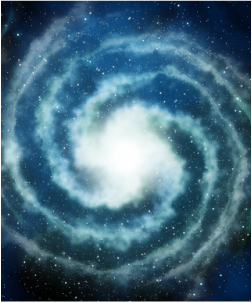
Summer Star Gazing
by Kim Wollenhaupt
I attended a ladies' retreat for our church this past spring. While there, we looked at the night sky and several stars, constellations and planets. I had also taken my portable/field stereomicroscope (see below). I wrote up the following notes for other ladies in case you or your children are interested in enjoying God's creation even more with these resources.
Here are some links:
(1) Stargazer web site. At this site, you can choose either a one minute or five minute video that describes what can be seen with the "naked eye" in the night sky. This is great for just going out and looking for something in the sky with no equipment needed. The web site has a different, short video describing the "naked eye" viewing of the night sky for each week.
http://www.jackstargazer.com/JHSG_DNLD.html
The five minute episode that describes what we saw the evening of our retreat was the one marked March 17 to March 23, 2014 - "The Winter Hexagon plus Jupiter."
http://stargazersonline.org/episodes/1411.html
You can still see this grouping of stars and Jupiter in the night sky (towards the west). In addition, a beautiful Mars can be seen in the southern night sky now (bright red colored planet).
(2) The book that I mentioned was "The Stars: A New Way to See Them" by H. A. Rey (Curious George author). It has a connect-the-dot system of looking at constellations that I think makes looking at the constellations much easier. It has explanations about looking at the night sky, groupings of constellations, and then star charts based on the date and time you are viewing the night sky.
http://www.amazon.com/The-Stars-New-Way-Them/dp/0395248302.
(3) The Astronomy flashlight that I was using is called the Astro Aimer. It has both a red flashlight for better night vision and a green laser for pointing at stars. There are several types of laser flashlights. I bought mine from a company called HoTech. They have had excellent customer service. I have had the Astro Aimer for years and use it regularly as my favorite flashlight as well. This is the link:
http://www.hotechusa.com/category-s/27.htm
(4) Another site just to be amazed at the beauty of God's creation is Astronomy Picture of the Day (APOD) from NASA. They have a different picture highlighting something from Astronomy each day --- could be a picture from the Hubble satellite or a view of auroras from earth.
http://apod.nasa.gov/apod/astropix.html
(5) The type of microscope that we used to look at the flower and potato bug is called a "stereomicroscope." It is different from a "regular microscope" (an optical or compound microscope). Through an optical microscope you can only look at thin "slices" of things, because you need to have light go through the specimen. With a "stereomicroscope," you can see depth of solid objects like rocks, plants, bugs, etc. The one I had at the retreat was called "Ken-A-Vision ESH200 Professor Stereo-cordless Microscope." I bought mine from an entomology company called BioQuip, and at that site the microscope is called the "Mini Stereo Microscope, 20x." It is typically under $80.
I personally think that a stereomicroscope is one of the best investments that a home school family can make in their "science" education. You can pick up a rock or worm or leaf or bug and look at it in such detail. My response regularly is "God is amazing" when I look at His creation this way! I especially enjoy looking at insects and moving creatures with this microscope.
This is the Amazon link for more info on the microscope:
http://www.amazon.com/Ken-A-Vision-ESH200-Professor-Stereo-battery-powered/dp/B005KC3TBA
I love looking at God's amazing creation this way. It shows some of the amazing detail God puts into everything He makes. I enjoy being amazed at God's creation with you while looking at the expanse of the heavens or the details God puts into his tiny flowers. What an amazing God.
In Christ,
Kim Wollenhaupt




 RSS Feed
RSS Feed
